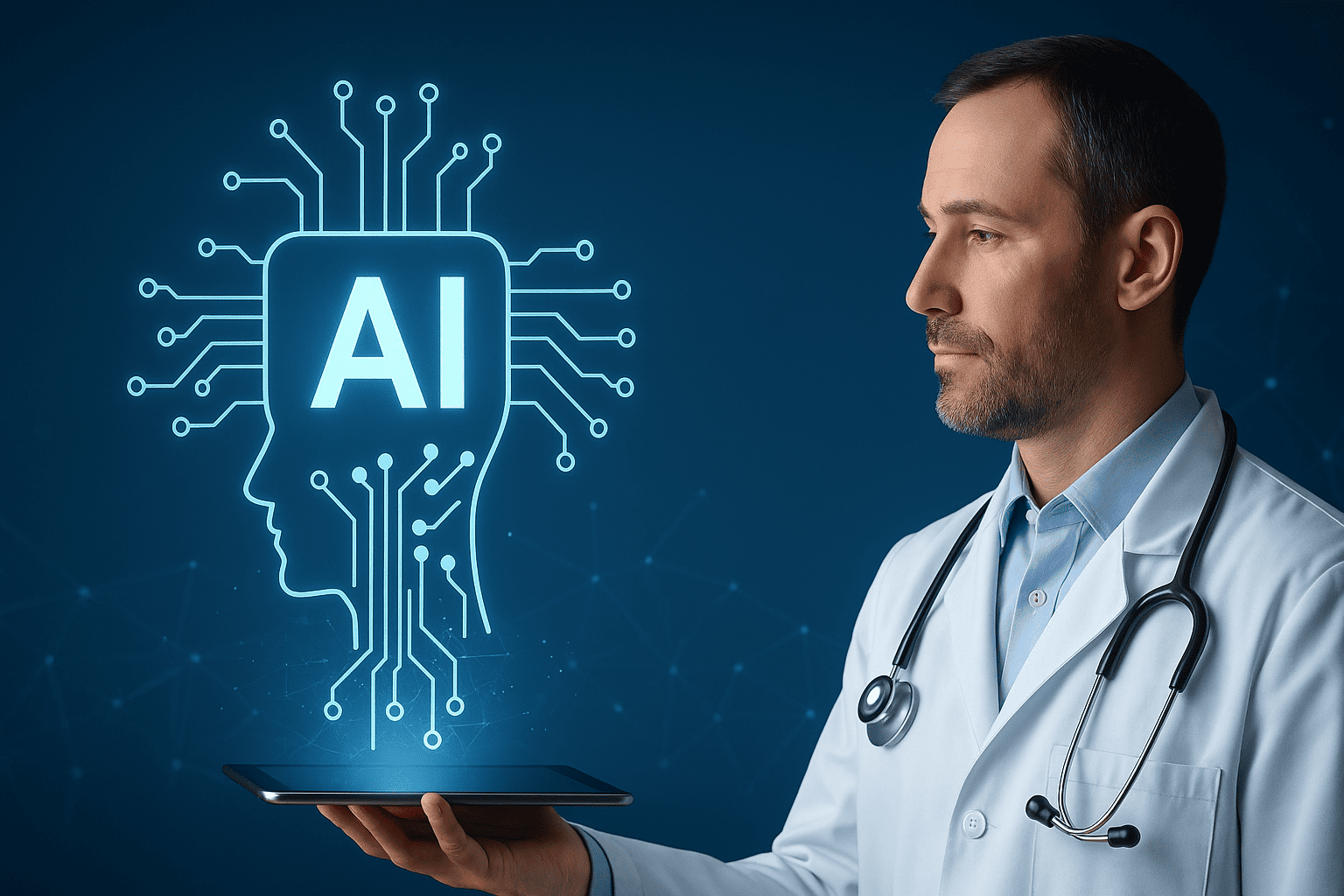Updated on: July 8, 2025
In today’s fast-paced healthcare environment, physicians often find themselves spending more time on documentation than on patient care. Studies show that doctors spend up to 50% of their workday completing Electronic Health Records (EHRs)—a task that contributes to burnout, reduced patient interaction, and lower job satisfaction.
Enter AI in medical documentation—a groundbreaking solution that’s transforming the way healthcare providers manage clinical notes. From Virtual Medical Scribes to fully automated AI-powered documentation assistants like Docscrib, artificial intelligence is revolutionizing how medical data is captured, recorded, and stored.
What is AI in Medical Documentation?
AI in medical documentation refers to the use of artificial intelligence, natural language processing (NLP), and machine learning to automate the creation and management of patient encounter notes.
Instead of spending hours typing SOAP notes or dictating after clinic hours, clinicians can now:
-
Speak naturally during patient visits
-
Let AI-powered scribes capture and structure the documentation in real time
-
Focus on what matters most—patient care
How Does AI in Medical Documentation Work?
Here’s how AI medical documentation tools like Docscrib function:
-
Real-Time Listening: AI listens to patient-provider conversations securely.
-
Contextual Understanding: Natural Language Processing (NLP) identifies relevant clinical information.
-
Note Generation: The AI generates structured SOAP notes or customized EHR entries.
-
Review & Approval: Providers review and approve notes before final submission.
👉 Learn how Docscrib’s AI Scribe can save you 2–3 hours per day:
Schedule a Free Demo
Benefits of AI in Medical Documentation
| Benefit | Impact on Healthcare Practice |
|---|---|
| ⏳ Time Savings | Less time spent on EHR documentation |
| 😊 Reduced Burnout | More face-to-face patient time; fewer late nights |
| 📄 Better Documentation Accuracy | Reduced errors and missing information |
| 💰 Cost Savings | Less reliance on human scribes; faster billing |
| 📊 Improved Compliance | Consistent and thorough notes for audits and legal defense |
The Role of Virtual Medical Scribes in AI Documentation
A key player in the AI documentation revolution is the rise of Virtual Medical Scribes. Unlike traditional in-person scribes, Virtual Medical Scribes use AI to assist with documentation remotely, often in real time.
Why Virtual Scribes like Docscrib Are Gaining Popularity:
- No need for additional office space
- Lower costs compared to human scribes
- Scalable to practice size—small clinics to large hospitals
- Secure, HIPAA-compliant cloud infrastructure
Practical Applications of AI in Medical Documentation
Here are real-world ways healthcare providers are using AI-powered documentation:
🩺 Primary Care & Internal Medicine:
-
AI captures routine visit notes, preventive care documentation, and chronic disease management details.
🧠 Behavioral Health:
-
AI assists in documenting therapy sessions, progress notes, and psychiatric evaluations—areas where traditional EHR templates fall short.
🦴 Orthopedics & Specialty Care:
-
AI handles high-volume documentation like post-operative reports, follow-up visits, and imaging reviews.
👉 Whether you’re a primary care physician or a specialist, Docscrib can be tailored to meet your unique needs.
Challenges and Considerations
While AI in medical documentation offers transformative benefits, there are also considerations to keep in mind:
| Challenge | Solution |
|---|---|
| Data Privacy & HIPAA Compliance | Use HIPAA-certified AI providers like Docscrib |
| Technology Adoption Barriers | Offer clinician training and onboarding |
| Potential AI Errors | Always include a human review step |
| Integration with EHR Systems | Choose solutions with easy integration (Docscrib supports multiple EHRs) |
Future of AI in Medical Documentation
The future of AI in healthcare documentation is evolving rapidly. We’re moving towards:
-
Generative AI for personalized note summaries
-
Voice-activated commands for EHR navigation
-
Predictive documentation based on historical data
As technology advances, AI will become a seamless part of the clinical workflow, enabling greater efficiency, accuracy, and patient-centered care.
Is AI-Powered Medical Documentation Right for Your Practice?
You Should Consider AI Documentation If:
✔ You’re overwhelmed by EHR documentation
✔ You’re looking to reduce physician burnout
✔ You want to increase patient throughput without sacrificing quality
✔ You’re focused on improving documentation accuracy and compliance
Solutions like Docscrib provide clinician-friendly, affordable, and secure AI scribe services that can be tailored to any practice size or specialty.
👉 See how Docscrib can work for your team:
Book a Free Demo Today
Final Takeaway
AI in medical documentation is not just a trend—it’s a necessity for modern healthcare. By integrating AI-powered solutions like Docscrib, healthcare organizations can:
-
Save time
-
Improve care quality
-
Enhance clinician well-being
The future is here. Let AI take care of the documentation—so you can take care of your patients.
✅ Explore Docscrib and discover how effortless documentation can be.
